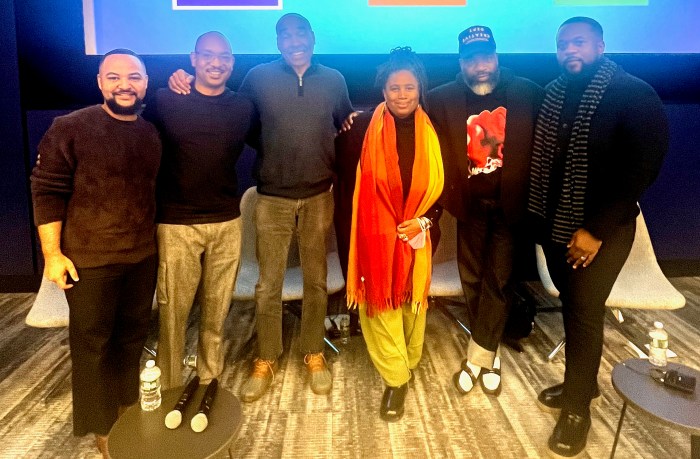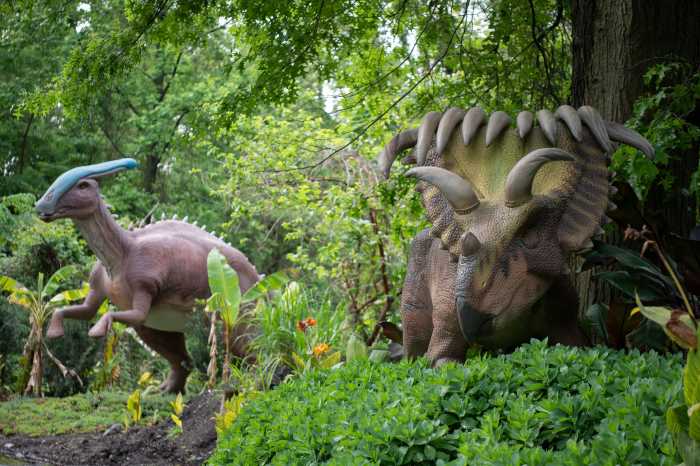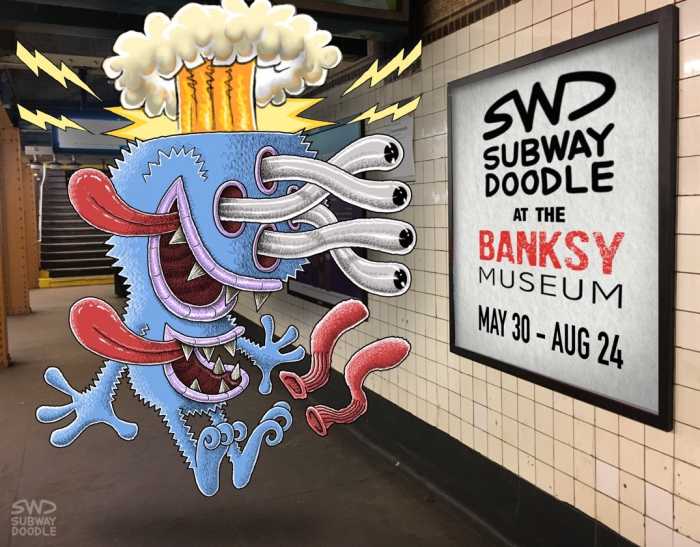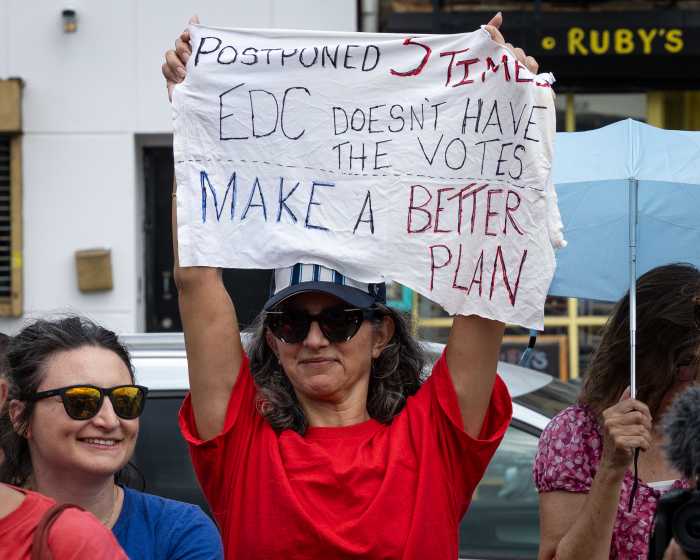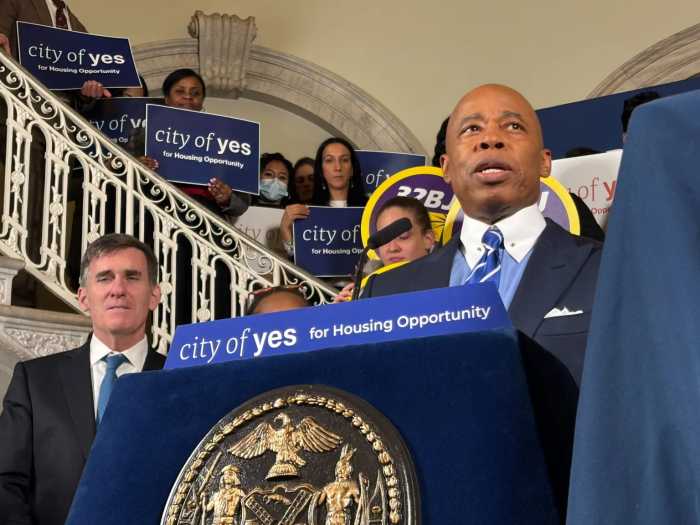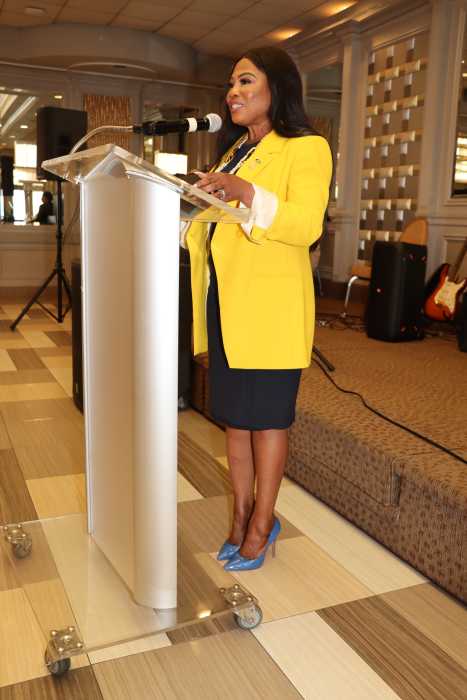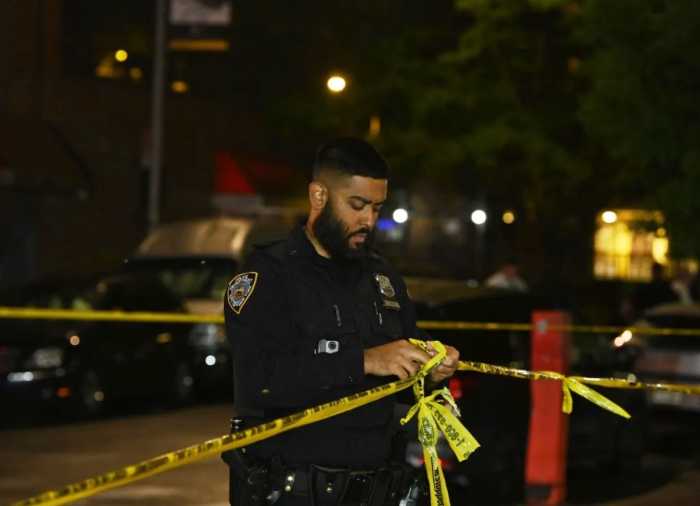Us, In All Our Glory|Brooklyn Museum's “Hide/ Seek”: a total queer revelation
BY DAVID NOH
If you really want to feel some pure, unadulterated gay pride, by all means get yourself to the Brooklyn Museum to see “Hide/ Seek: Difference and Desire in American Portraiture.”
The first major museum exhibit to focus on queer identity in this nation’s portraiture, it is, in a word, magnificent — a celebration of us in all of our ecstatic variety and genius. As you stroll through the beneficently laden galleries, you realize that this is not only a breathtaking artistic compendium, but also a veritable gay cultural history of the past century and more.
Curated by Jonathan D. Katz, who heads the visual studies doctoral program at SUNY Buffalo, and David C. Ward, an historian at the Smithsonian’s National Portrait Gallery in Washington, where it was originally shown last fall, the exhibit has been reconstituted in its move to New York, some pieces having been replaced by others. Some changes were due to expired loan agreements with museums and other sources but, in such cases, Katz and Ward assured me, every effort was made to complement, and even improve upon, the original selections.
While in DC, certain leading Republican congressmen, in tandem with the ultra-right Catholic League, demanded the excision of David Wojnarowicz’s AIDS-inspired 1987 video, “Fire in My Belly,” with its “offensive” images of homosexual intimacy and ants crawling across a crucifix — pressure to which the Smithsonian yielded without a fight.
Happily, the video is now back in the show, with additional audio added from a 1998 ACT UP demonstration, something the curators justifiably crow about.
At the press preview, Katz said, “I’m not going to broadly address the controversy. I just wanted to make an offer that if I could be of any service to the bishop of New York in terms of teaching him the iconographic tradition of his faith, I’d be happy to do so.”
Other videos included here, which add such rich media range to the exhibit, are Andy Warhol’s 1960s “Screen Tests,” featuring the nubile young likes of Edie Sedgwick, Gerard Malanga, and Baby Jane Holzer, as well as James Bidgood’s 1971 “Pink Narcissus,” which reveal this artist’s influence on such modern imagists as David LaChapelle and Pierre et Gilles.
Throughout the show, as well, audio recordings of queer-identified musicians Bessie Smith and Ma Rainey (from the gay jazz reissue “AC/ DC Blues”) can be heard, lending an agreeable layer of aural raunch. There’s even an advertisement for Smith’s wonderfully out anthem, “Prove It On Me Blues,” with the lyrics: “I went out last night with a crowd of my friends/ They must’ve been women ‘cause I don’t like no men.”
Beginning with Thomas Eakins’ saintly 1891 photograph of Walt Whitman, the show delivers a multitude of famous artists, like James Baldwin, in Beauford Delaney’s 1963 vision of him with piercingly all-seeing eyes; Marcel Duchamp, in Florine Stettheimer’s ghostly 1925 oil; Frank O’Hara, who is featured in Larry Rivers’ monumental, very hot 1954 nude pose, as well as in Alice Neel’s 1960 portrait, which captures his famous avian profile; and Langston Hughes, whose handsomeness is captured in Carl Van Vechten’s 1932 photo.
A definite boon here is the discovery of lesser-known names, like Carl Van Vechten (1880-1964), the white writer/ photographer who recorded the glory that was the Harlem Renaissance through his invaluable pictures and sometimes controversial writing (especially his incendiary 1926 book, “Nigger Heaven”). Although married, he was, as they used to say, as gay as pink ink, and when he donated his papers to Yale with the stipulation that certain of them not be opened until 25 years after his death, a fabulous cache of scrapbooks, containing homosexual ephemera and erotica, was just waiting to be discovered.
My personal favorite in the show is a spectacular 1936 portrait of him by Romaine Brooks (1874-1970), a lesbian, who, Katz told me, “slyly hid images of the black men Van Vechten so loved in the background, as you can see. We were particularly lucky to get this portrait from Yale, which has never been publicly shown before — a difficult process, but worth it.” Brooks’ equestrienne self-portrait is also present, in all of its timeless dyke chic; her mode of dress, like that of her circle, was meant to send a queer signal to the so-inclined in a more repressed age, and she had a 50-year relationship with “the Amazon,” Natalie Barney, a notorious writer/ saloniste whose endless promiscuity she put up with.
An enchanting watercolor of sailors dancing together by Charles Demuth (1883-1935) only proves plus ça change, plus c’est ca même chose. Demuth, an intimate of Marsden Hartley, frequented Manhattan’s Lafayette Baths, and his self-portrait, not included in the show, featuring him surrounded by frolicsome nude men, was probably set there.
Demuth’s Hartley connection is typical of the endless, intriguing cross-connections recurring in the exhibit, which only add another contextual layer, and Hartley’s “Eight Bells’ Folly: Memorial to Hart Crane” has glowing pride of place on a wall. Ward broke it down beautifully: “Hartley and Crane had a difficult, ambivalent relationship, for Hartley was always criticizing Crane’s lack of discipline for going off on benders and coming home with Norwegian sailors, and then writing about that. But when Crane committed suicide in 1932, Hartley really swung into action with this return to poetic abstraction. Crane jumped off a ship carrying him back from Mexico at noon — the eight bells you see here — and the rest of it is a wonderful tribute to Crane’s poetic work, particularly his masterwork, ‘The Bridge,’ which is suggested here by these shapes.”
The glorious hedonism of Demuth’s aquarelle — an exuberance that makes our lives, for all their travails, so damned much fun — is a spiritedly affirming leitmotif running throughout. It’s present in George Bellows’ joyous 1917 lithograph, “The Shower-Bath,” which presents every conceivable male physical type in one of those now completely defunct Manhattan steam baths that were once such vital bonding ground. John Singer Sargent’s proudly flaunting “Nude Male Standing” shows a decidedly different side to the “Madame X” painter, demonstrating he didn’t need velvets and brocade to make a sexy point.
A particular coup are works by Robert Rauschenberg and Jasper Johns, which, for the first time, bespeak their intimate relationship. Katz said these “two defining figures in post-War American art, who made their greatest work when they were together, are never talked about in this way. This Johns painting, ‘In Memory of My Feelings,’ takes its title from a Frank O’Hara poem and is Johns’ most eloquent memorial to the end of their relationship. One of the first paintings they made together was the iconic American flag, which appears here, but gray and reversed, and this is also a two-sided pictorial allegory. You see this fork and spoon wrapped together, a metaphor for ‘spooning,’ and, on the other side of the painting, they are separate, representing the loss suffered and inability to speak about it at the time. It’s Johns as ventriloquist.”
Tragedy, perforce, marks a number of the works, and no image is more haunting than Keith Haring’s 1989 “Unfinished Painting,” with its trademark calligraphy covering but one corner of the canvas, the paint dripping down so eminently suggestive of life’s delicate transience.
The AIDS era is fully documented in pieces like Peter Hujar’s 1981 etiolated portrait of Wojnarowicz, Robert Mapplethorpe’s grimly staring self-portrait as well as his take on Roy Cohn, and Jerome Caja’s inversion of Goya’s painting of Saturn devouring his son, ”Charles Devouring Himself,” which uses nail polish mixed with the cremated ashes of his friend, who committed suicide.
An artist I was wholly unfamiliar with, Jess (Collins, 1923-2004), was responsible for some of the most piquant images, particularly his marvelously naughty “Lord Pervert,” c.1956, which definitively shows what happens when you get us queens angry, by taking down Whittaker Chambers, the closeted Time magazine writer who named names, including Alger Hiss, before the Committee on Un-American Activities in 1948. Jess took a Lord Calvert “Men of Distinction” liquor advertisement and hilariously collaged it, using Chambers’ face, surrounded by derisive graffiti and pasted gibes, and gay references like a butterfly poised on his highball.
“You would probably have heard of him if you knew California artists, as Jess made the mistake of not living in New York,” Katz explained. “He was the lover of the poet Robert Duncan and loved to play these delicious, bawdy erotic games. I love what he did here with the slogan ‘It’s always better to get a big one!’”
You’ll probably need return visits to the exhibit to take in its full, wide-ranging, eclectic wonder. Cecil Beaton’s Gertrude and Alice B. are here; Peter Hujar’s 1975 portrait of Susan Sontag shows her at her most relaxed and leonine; Annie Leibovitz has Ellen Degeneres hilariously cupping her breasts on Kauai; Andrew Wyeth’s “The Clearing” revels in young, blonde maleness; Mapplethorpe’s famous 1979 leather couple shows the flip side of gay masculinity; Joseph Leyendecker’s 1914 Arrow Collar couple remains the elegant apotheosis of male domesticity; and there is Paul Cadmus’ fabulous wish-fulfillment of a world in his 1947 “What I Believe,” with its cameos of E.M. Forster, Jared and Margaret French, and the artist himself to endlessly ponder.
For all the impressive, high-flown, intellectual theorizing about the show bandied about at the press preview, as things were winding down, my favorite comment came from Ward, who, with complete justification, happily said to Katz, “We did a fucking great job!”
Essentials:
HIDE/ SEEK:
DIFFERENCE AND DESIRE IN AMERICAN PORTRAITURE
Brooklyn Museum
200 Eastern Parkway, near Grand Army Plaza
Through Feb. 12
Wed., Fri.-Sun., 11 a.m.–6 p.m.
Thu., 11 a.m.–10 p.m.
$12; $8 for students & seniors

